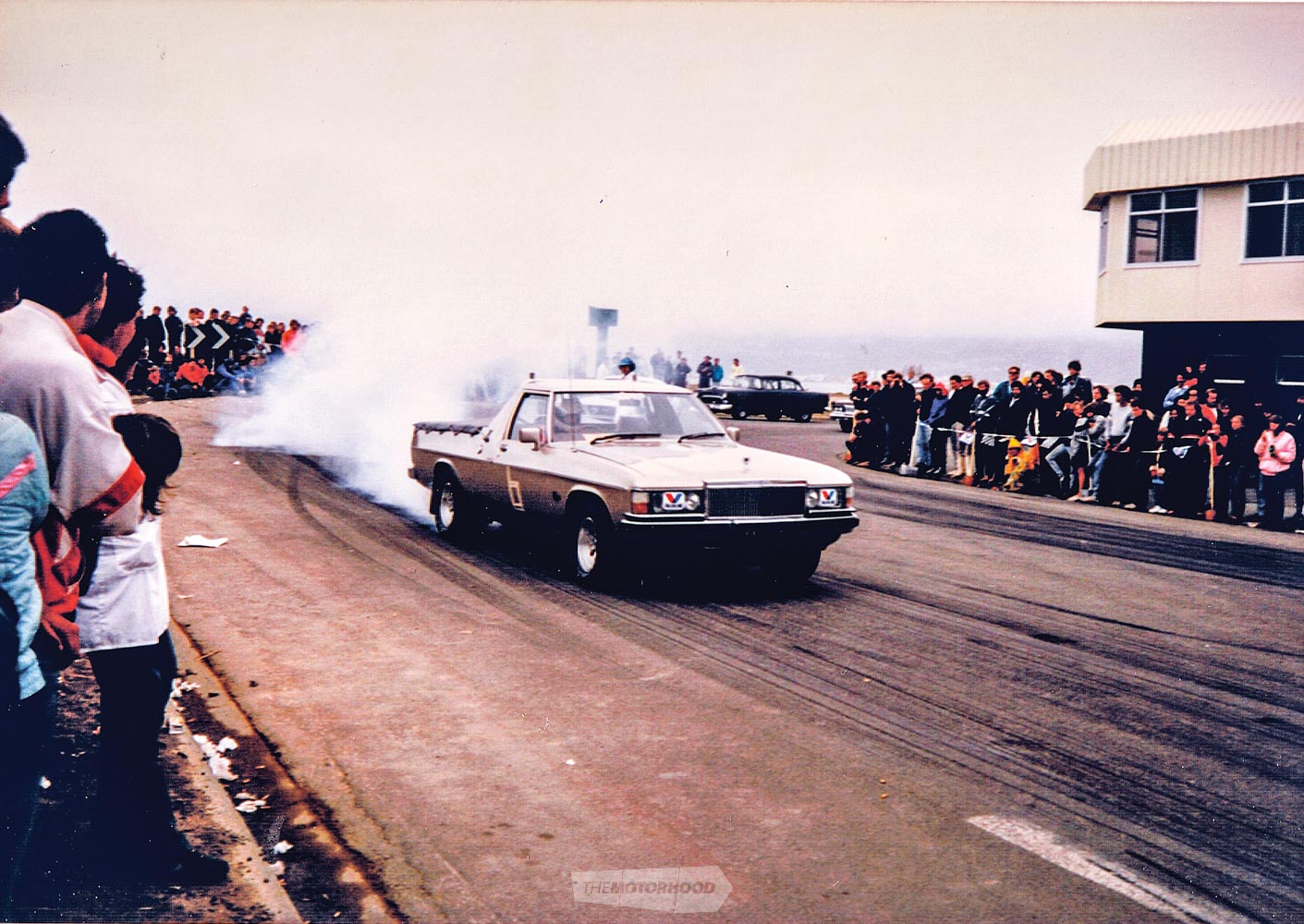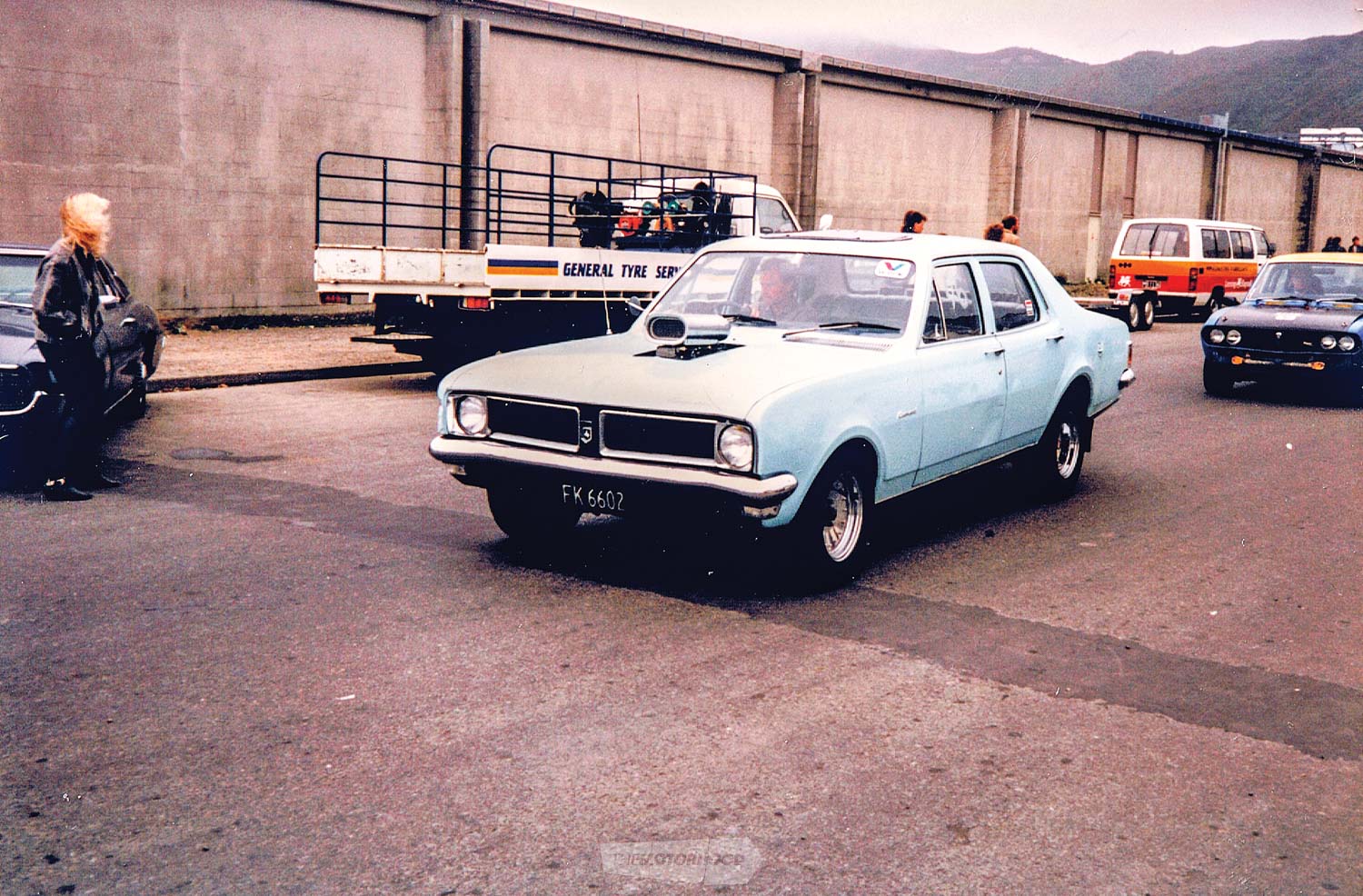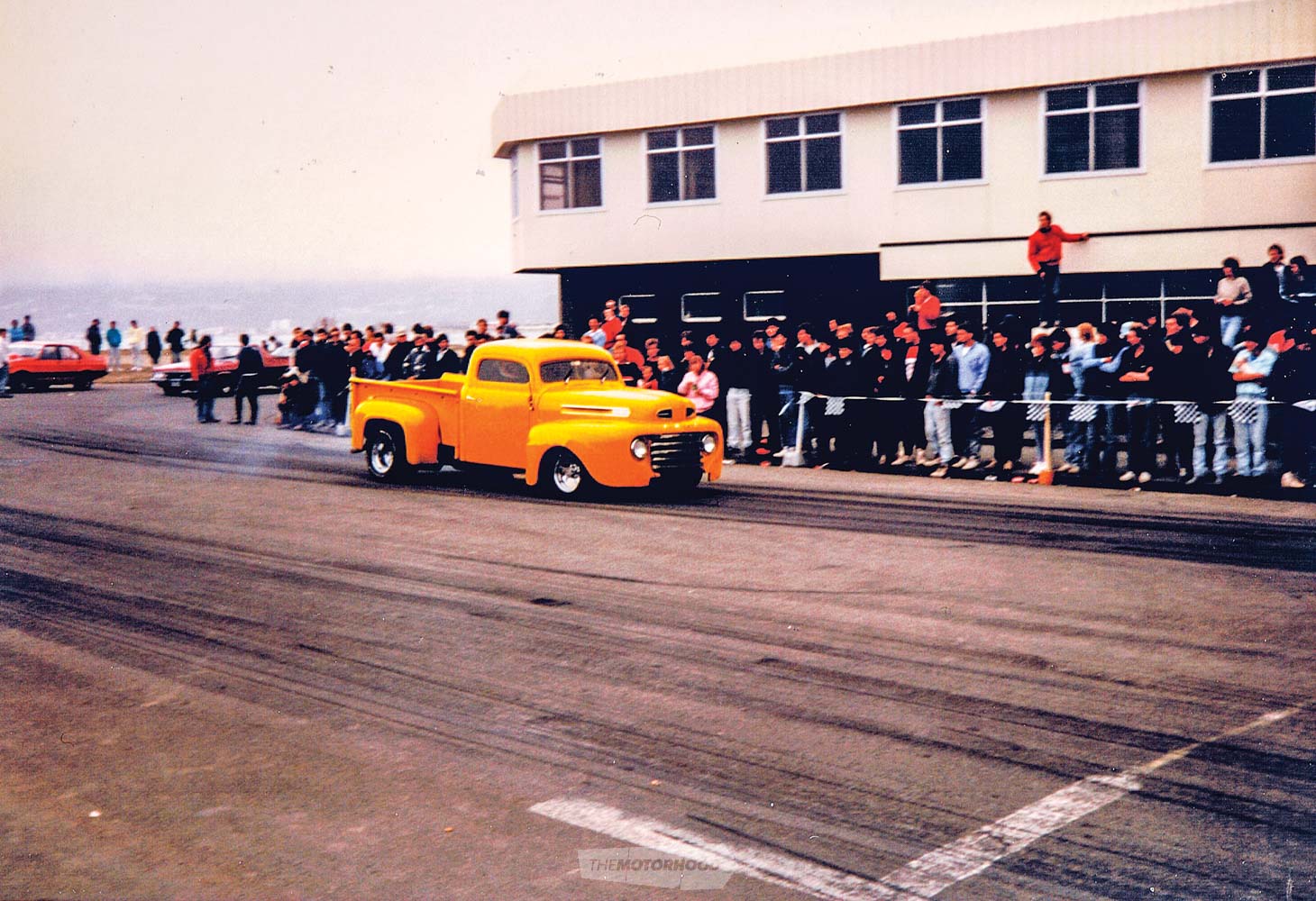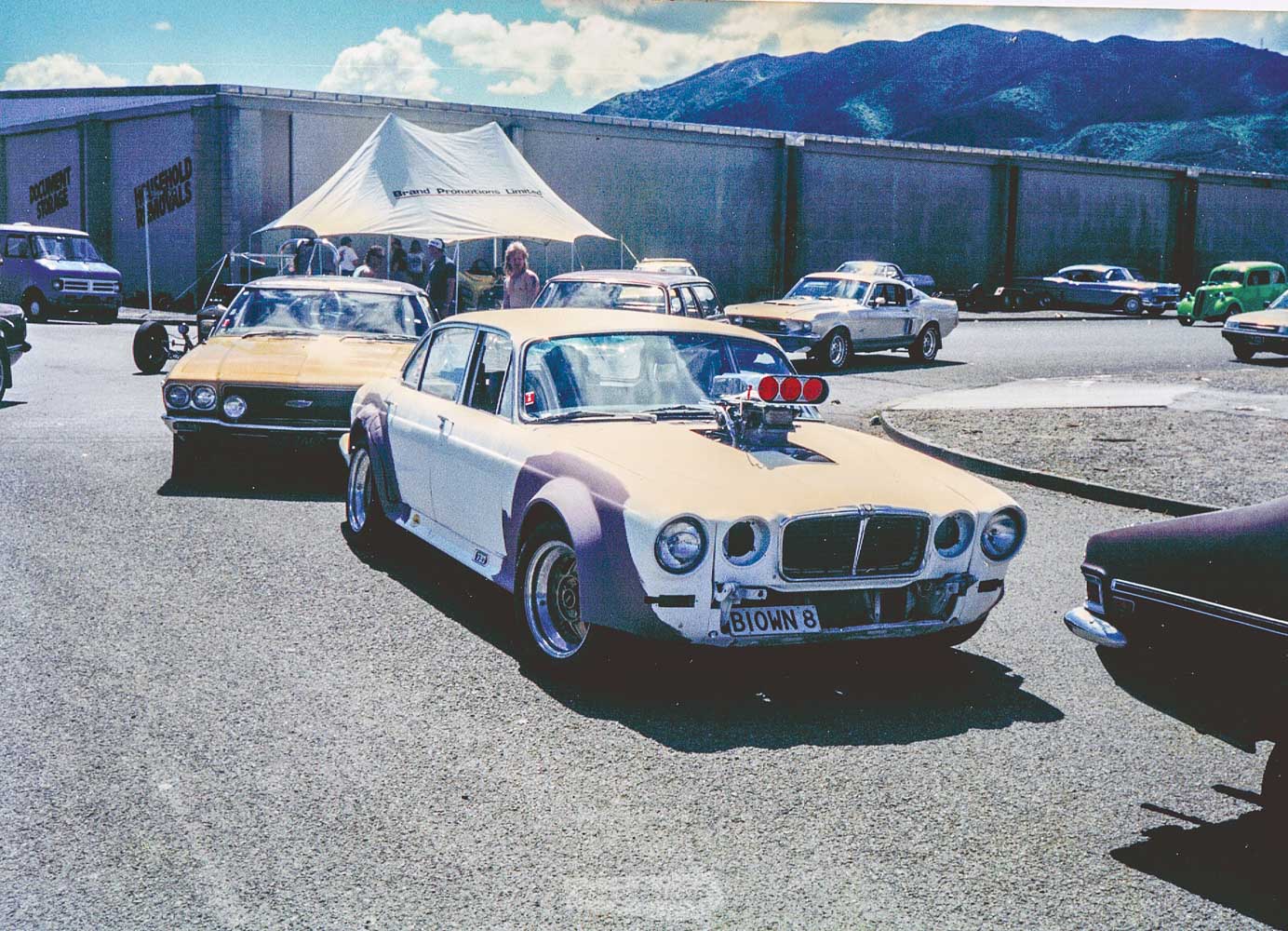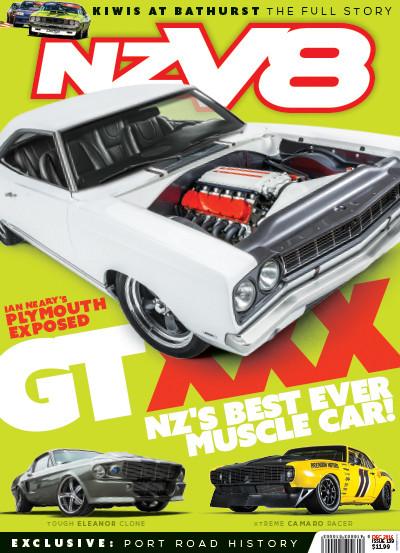Our resident old fart, Kevin Shaw, reminisces about 50 years of the Port Road Drags!

Meremere Dragway — or Champion Dragway, the name it’s often recalled as by we of the older generation — is often considered to be the home of drag racing in New Zealand. What many don’t realize is that, by the time the Meremere strip opened, Port Road was already in its seventh year of racing! While it’s not a quarter-mile track, and it may have started out as essentially a street sprint spot, Port Road is New Zealand’s longest-running drag racing venue and, this year, is celebrating 50 years of racing. Unlike Meremere Dragway and other tracks, it’s never had a rainout, with racing completed every single year — although sometimes only just! For those of you who have never ventured to the Port Road Drags, you really don’t know what you are missing. It’s probably your best opportunity to see some of the toughest street cars around running hard where they belong: on the street. Originally run by the Hutt Valley Motoring Club, the event was adopted by Cam County way back in the 1980s and, under its stewardship, has grown into a must-do meeting for most of the quickest street cars in the country.
My first exposure to Port Road was back in 1984 when I moved to Wellington. Port Road was to Wellington what Wiri was to young men in Auckland — no doubt every town has a place like it: somewhere the young guys gather to show off their cars and do skids. In Wellington, Sunday nights at Port Road was the place.
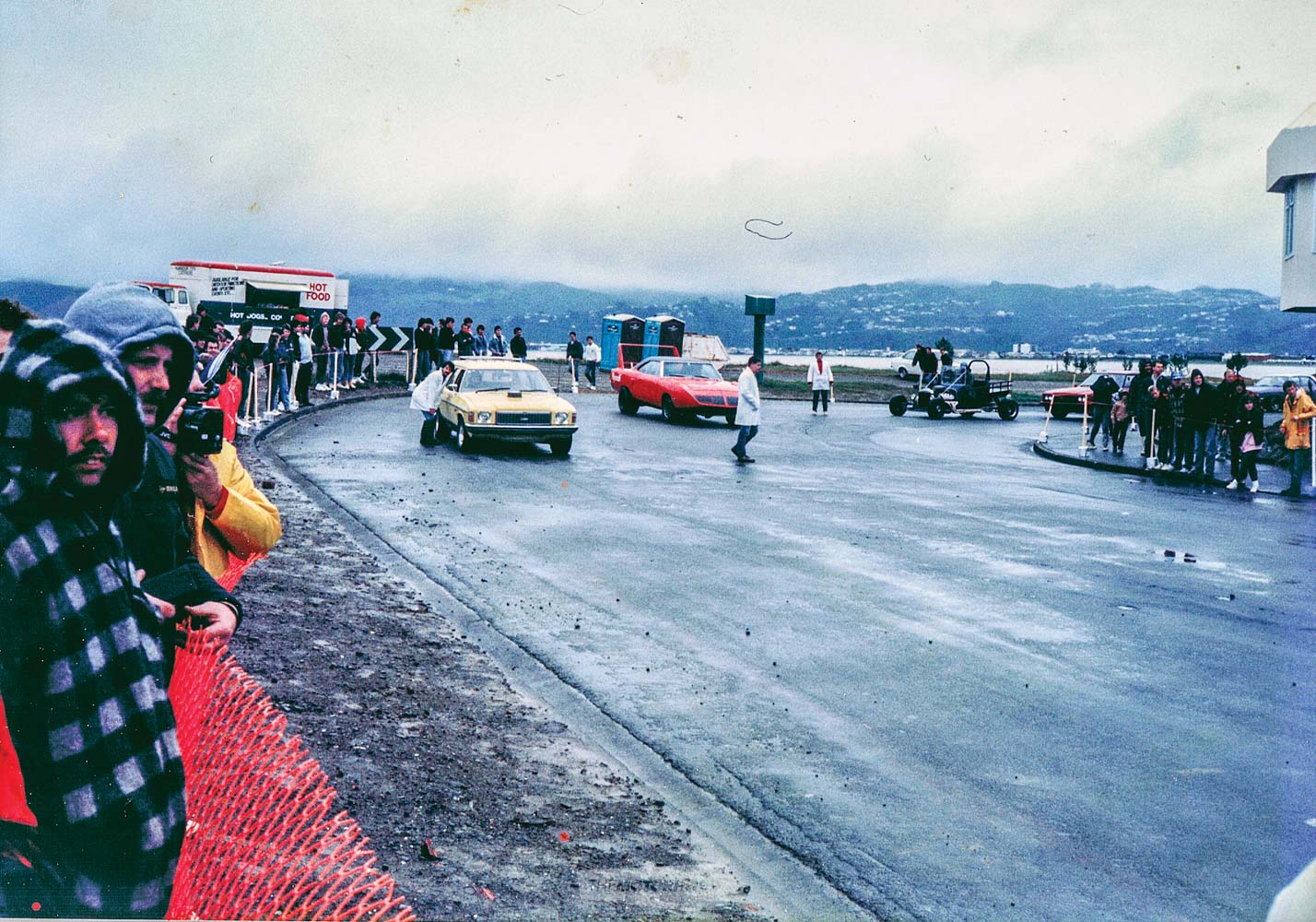
By memory, this is around 1989, with Rhys Harrison lining up against Matt Gibbons’ Superbird. Rhys had stacked the Torana a couple of times — once quite spectacularly, T-boning a geriatric while doing a massive burnout on High Street — and put the engine into the new family wagon, which ran 12s on LPG. This meeting was the closest Port Road ever came to be rained off; look at the puddles on the ground, yet the show went on!
Once a year, though, the real event happened, and the place was transformed into a proper drag strip — well, kind of. The road was closed, a tree was set up, and the racers pretty much paired up and went for it. Anyone who attended the meets in the ’80s will remember how poor the safety side of things was in the early days — spectators sitting on the fence rails with feet on the kerb as cars performed massive burnouts just a few feet away, with no spectator protection at all for the length of the track. I guess, back in the early days, it was an event for the car-club members to run their cars flat out, and the racing was for the racers rather than the spectators — even though their numbers were huge.
Due to lack of proper drag strips, closed-road street drags had increased in popularity over the years, and, by the late ’80s, there were many clubs in the lower North Island doing the hard yards and running eighth-mile meetings. Over the summer, there were street meets on the waterfront at Porirua, at Heads Road in Whanganui, at Alexander Road out in front of General Motors in Upper Hutt, at the Manfeild racetrack in Feilding, and on the streets of New Plymouth. In Masterton, a couple of different roads were used before the racers got the use of Hood Aerodrome. Even Levin got into the act, albeit only once. There were also annual 3⁄16-mile meets in Blenheim and racing in Nelson, for those who didn’t mind a couple of ferry rides in a weekend. Mix this in with Thunderpark and Champion, and there was racing pretty much every other weekend through summer.

Even with so many options, Port Road was still the place to race. The cars got faster and the crowds got bigger, until it got to the point at which entrant numbers needed to be limited or we couldn’t get through the day. Such was the competition just to compete that, within days of invitations being sent to the NZHRA clubs, the mailbox — for the paper variety of mail — would be full, as would the field for the next meeting. The odd competition car would be invited to do ‘exhibition passes’, but these often ran hard, and often very sideways, for the full eighth-mile, with numerous rails, altereds, and doorslammers making their mark down Port Road over the years.
Pressure from the NZHRA contributed to the realization by the clubs such as Cam County that ran the closed-road meetings that conditions needed to be made safer; it was becoming obvious that a few waratahs and some plastic mesh were no longer going to cut it. The local clubs banded together to get all the gear needed to run a meeting. Cam County built some crowd-control fencing, and Moonshine Rod and Custom Club sourced a heap of 44-gallon drums, which were filled with water and used to line the tracks. There was only one set of timing gear, which did the rounds — the former Champion Dragway tree, which, from memory, was owned by New Plymouth Rodders. However, with a group of clubs doing contra deals or renting their gear, these meetings were achievable.
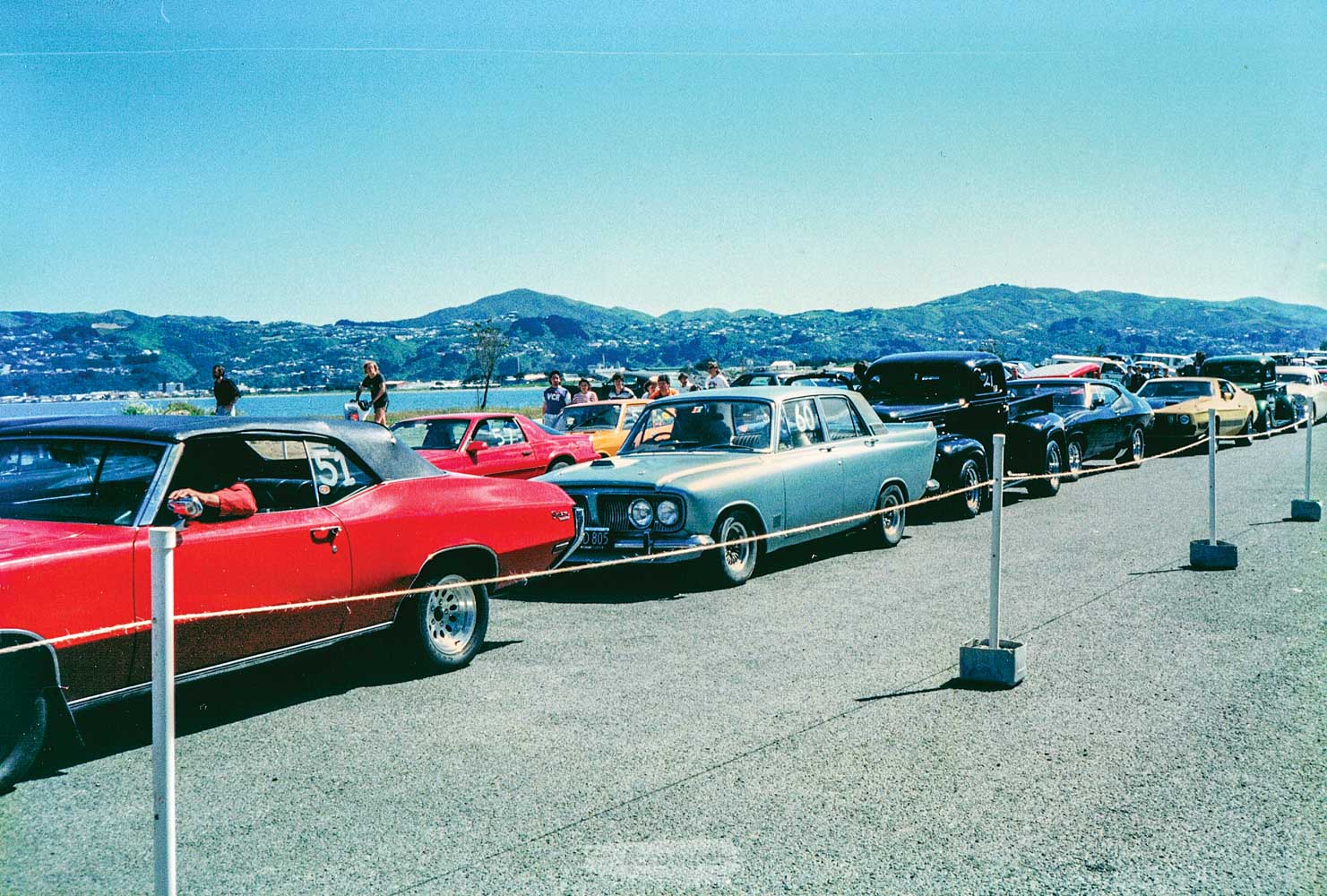
The Mk3 Zephyr belongs to Steve Cooper, and the little scoop on the bonnet was for the turbo! He was running a 272ci Y-block with a Holley four-barrel sucked through a turbo, with water injection to control detonation. This was mated to a Jag four-speed with electronic overdrive. I think about this time — judging from the paint job — he had upgraded to a 351C with the same single-turbo set-up. Never much good on the strip, Steve’s Zephyr was a demon on the open road, easily hitting speeds over 140mph!
If you think an event is hard to put on at a drag strip, you should try using a public road; getting permission for road closures — even in an industrial area — is no easy task. These closed-road events are difficult to manage, with councils, businesses, and all the Nimbys in the way. No one, other than the racers and the crowds of spectators, wanted to see these events go ahead, but, thanks to the determination of the local hot rod clubs, it did happen.
In about 1990–’91, Cam County did a deal with Terry O’Leary at U-Save Autoparts — which was already a sponsor at Port Road — to bring all the clubs together for a point-score series. With U-Save Auto Parts the naming sponsor each time, racers needed to attend each eighth-mile meeting to be in to win some good prizes at the end of the season. It’s hard to say whether it was a huge financial success for U-Save, but it certainly had Cam County and the other clubs realizing what a revenue stream a properly run meeting could be.
I like to think it was win-win for all involved, as there were certainly more cars travelling to events, and — for probably the first time — racers building, or at least setting up, their cars more for the eighth-mile than the quarter. I know my daily-driver lost its cruising 3.25:1 gears for slightly more aggressive 3.7:1s, while another club member, Joe Tomasi, moved to 4.11:1s all year round, which made his trip to Thunderpark a slow one! Others also made changes. Rodney Whittaker dropped 4.88s into his big block Chev–powered Monaro, while Dennis Dyer’s ’57 gained ladder bars, steep gears, and a blower. Even Paul Shearer’s cruisy Chev Statesman found nitrous, and, later on, a 6-71.
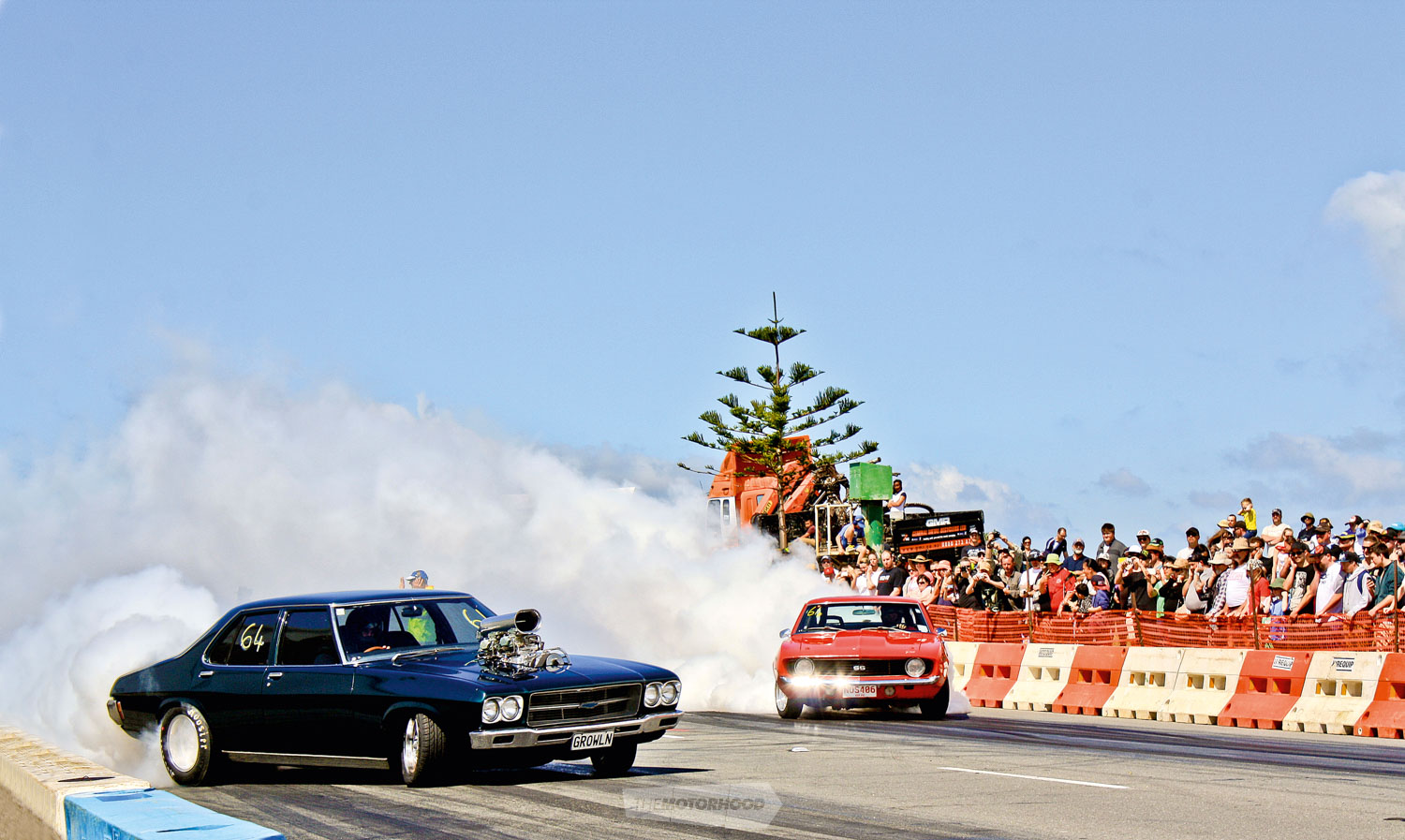
Some could say we were just catching up, as Lower Hutt already had some seriously fast cars, albeit built more for the quarter-mile at Thunderpark. Graham Lye’s 426 Wedge-powered Dodge was an awesome street weapon, as was Matt Gibbon’s Dodge Dart — and his Superbird, which he also used to drive pretty hard around the place. Rod Benjes’ tunnel-rammed LJ Torana was another tough little car, but riding shotgun in Rhys Harrison’s 454ci LX Torana back in 1986 for a run into Wellington late at night is a memory that I will have for life — the big block singing at over 6500rpm in top through open headers, flying under the Ngauranga Gorge interchange and using all the lanes to straighten out the gentle curves of the motorway, through The Terrace tunnel, and then full noise back out to the Hutt.
A few years later, on a road trip up to Thunderpark in the original ‘CUBES’, Mark Coffey set the bar even higher — let’s just say 7000rpm with a 25-inch tyre and 3.25:1 diff gears is pretty fast. Mark set a few records with that old HQ — a quick car even by today’s standards — one of them for being the heaviest car on the scales at Thunderpark, at more than 1800kg, yet he still managed to set a national record. I think it was 11.7s at 121mph on the same BF Goodrich T/As we drove up on, as there were no Mickey Thompsons, Hoosiers, or the like at that stage; a very staunch car!
Dennis Dyer’s ’57 Chev, painted after its two-door conversion. The car was later supercharged, and has now been owned by Richard Lewis for the past 20-plus years, in storage in Mark Coffey’s workshop
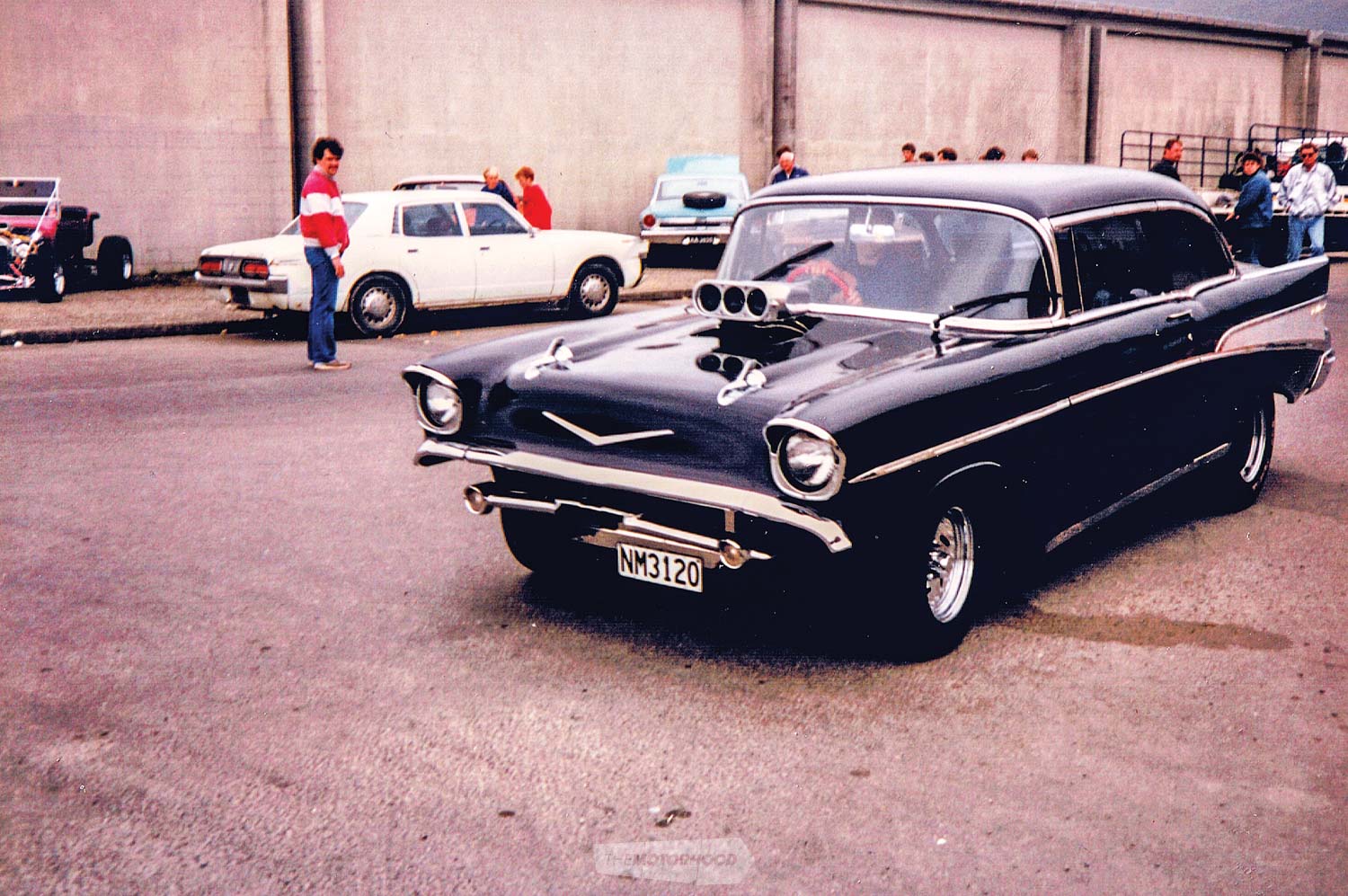
This was a great era of racing: the days of building a car before the certification process was around, when you could pretty much build what you want, and, so as long as you could get a WOF, you could turn up and race. Glory days! You could be running a single carb one week, then a tunnel ram, nitrous, blower, or whatever the next week, and get out there and have fun — and we did. Just as certification came in, one guy in Wellington submitted plans for the T he was planning to build, and carried on with it while he waited for approval. Some two months later, when they came back with a couple of queries before he got the go-ahead, it was already on the road with rego and WOF! That little pink T saw a bit of action at Port Road, too.
One weekend, a couple of club members and I got stuck in and tubbed my old Holden — new inner guards and rear rails grafted in to drop it low, with bigger tyres, and the ‘I SKID’ Kingswood was born. Built to do skids with the best of them, it went through seven pairs of tyres at one meet at Port Road back in 1994, winning the slowest race ever, at 2min 8s, in a smoky race against Mike Keening, who red-lit in his ’64 Impala!
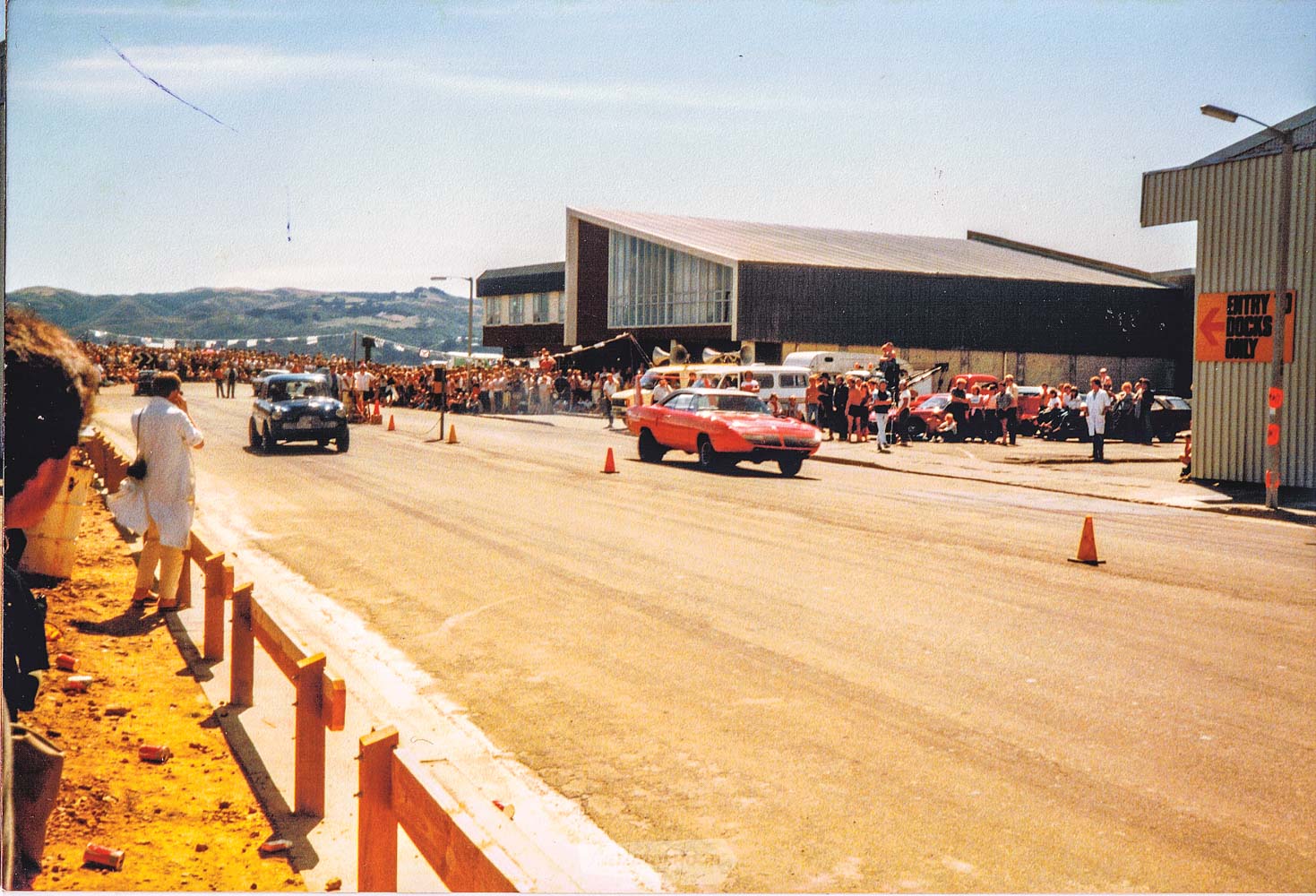
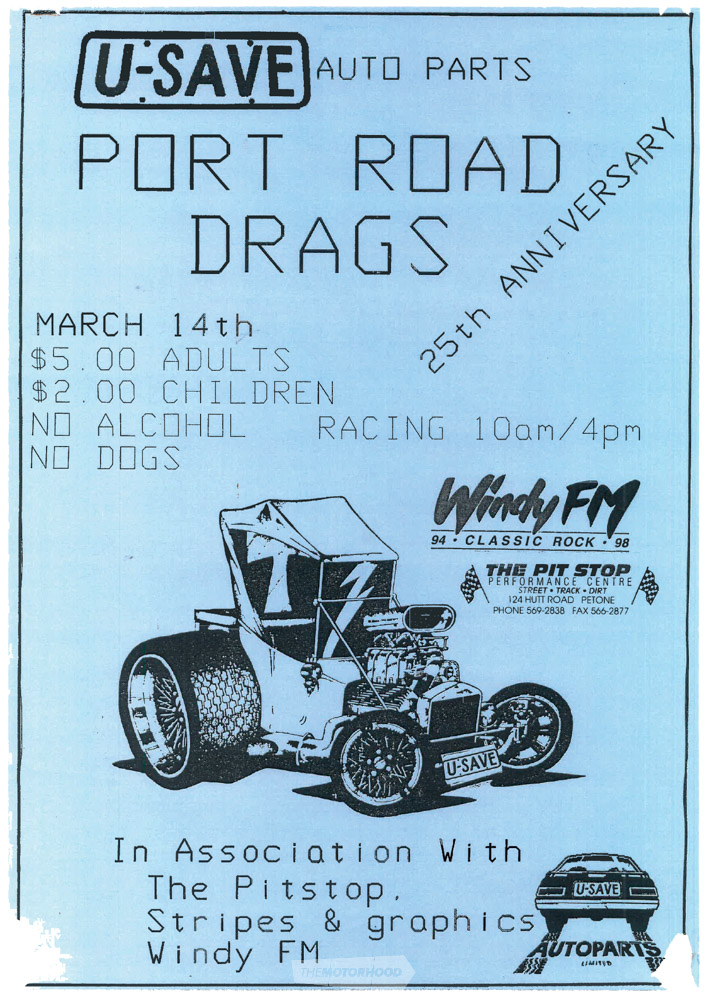
There were some pretty staunch cars running around the street back then; daily-drivers being raced on the various tracks on the weekends. For anyone living on the Hutt hills in Belmont, the sound of cars being ‘tuned’ on the motorway at night was a common occurrence.
At Port Road through the ’90s, cars just got quicker and quicker; before long, full-bodied HQs, Falcons, and the like were running eight flats or dipping into the sevens, which was normally the domain of the Ts and high-powered hot rods. The odd T, such as Peter Ansell’s, was regularly running sevens, and occasionally a 6.9, but there were plenty of others hot on Peter’s heels!
There were some crazy cars being driven back then in addition to the rapid Ts — Gavin McLaughlin’s tiny Morris 8 with blown 383 Chev on board, and Mike Hogan’s ‘52ROCK’ showing that you don’t need aerodynamics if you build enough horsepower and throw enough nitrous at it! Rhys Harrison retired his Torana and transplanted the running gear into an HZ Premier wagon, running in the low eights (from memory) and doing skids like there was no tomorrow. Matt Gibbons always had one of his Mopars on hand, and Terry De Graauw’s ‘EVIL 8’ Dodge was a true street demon, with a wild 440 on the bottle. I remember Terry overtaking me at Port Road during an exhibition run in which I was doing full-track burnouts; he flew past with the front wheel lifting six inches or more in the air on the first to second change. That was a car capable of low 11s at 130mph on the quarter-mile back in the mid ’90s.
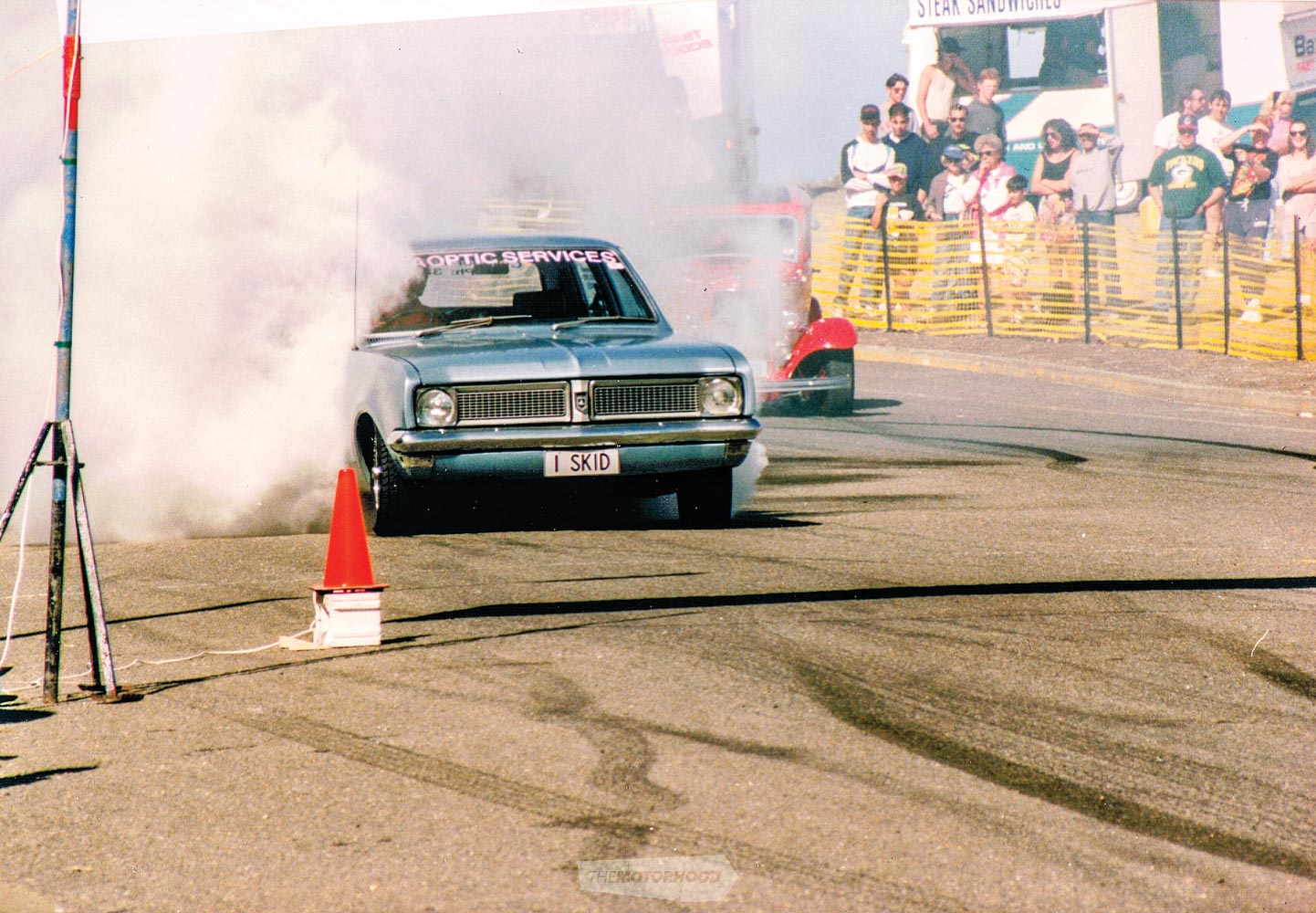
My Holden HT living up to its number plate! This photo was taken around 1992–’93, with racing running south to north.
By the mid-to-late ’90s, many racers were stepping up, dropping engines into smaller and lighter cars in order to be at the quick end of the field. There were plenty of wild Ts in the scene back then — street driven plenty, but obviously built for racing. Alan Lowe pulled the hot 351W from his MkV Cortina, dropped it into a T with a big dose of nitrous, and boom — seven flats, and eventually into the high sixes. Angus Perham had his big block T on the bottle, and Peter Meo rebuilt ‘TERTAL’ with a killer tunnel-rammed 427 and a big dose of nitrous as well. I dropped the big-revving small block from my HT into a T, without NOS but with low-gear gears, to get it into the 6.90s. Setting up for the eighth-mile diminishes the streetability of the car, as anyone who has driven 5.40:1s on the motorway will tell you, but it would pin you to the seat big time off the line! Others followed suit, with high-powered small cars, which, while fun, are always a handful, like the big block Chev–powered Ford Pop of Darren Riches, who is the bloke to beat today.
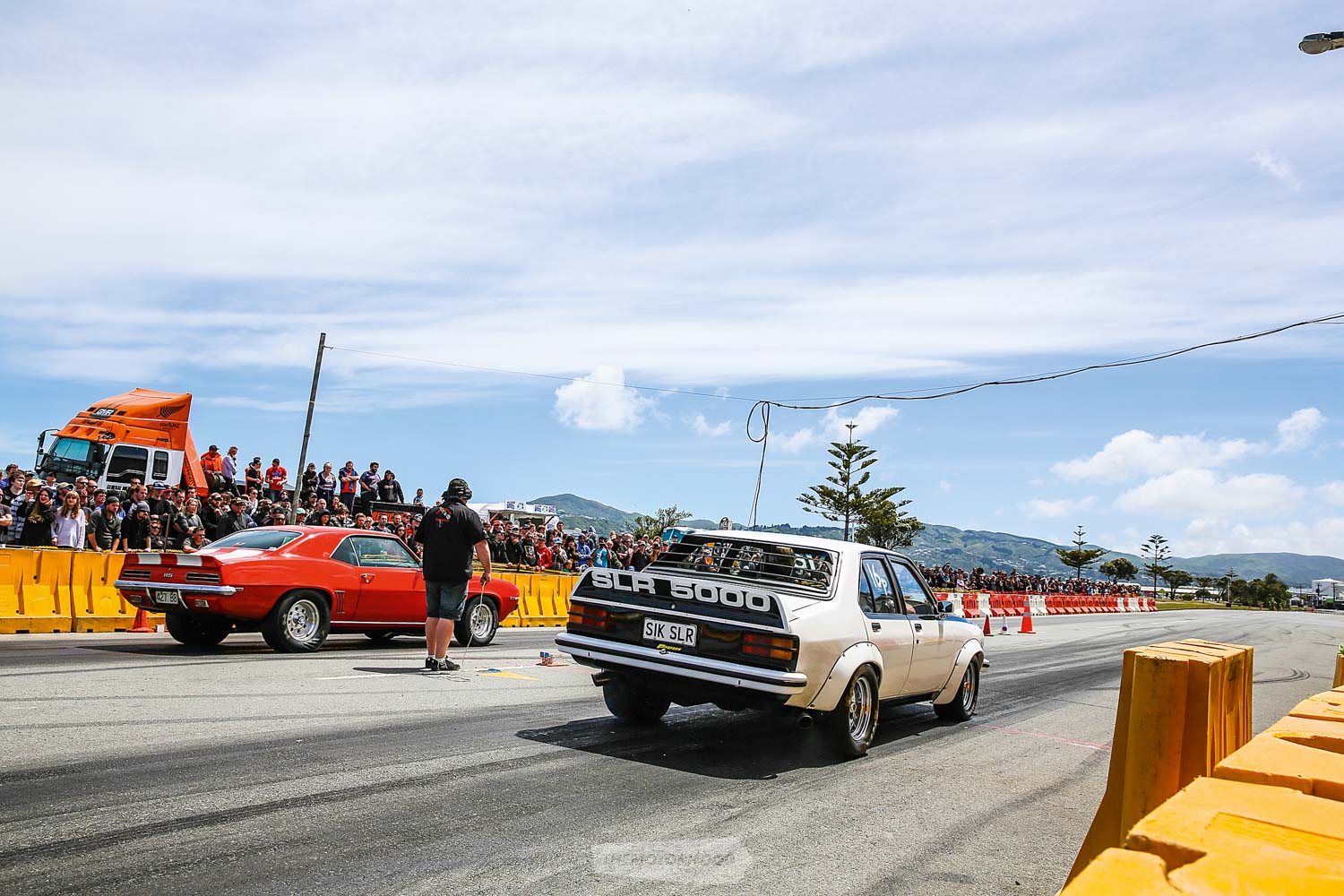
I left Wellington in 1997 but have returned a few times to Port Road over the years, and I am truly impressed at the level to which Cam County has taken closed-road racing. This event is run as professionally as any strip in the country, with a huge focus on safety for the racers and the crowd alike. The police attend the drivers’ briefing to breath-test every driver at the start of the day. A positive test means no racing — something I have never seen at any of the major tracks in New Zealand. The club’s professionalism has improved immeasurably over the past 30 years, as has the level of competition, which is still as fierce as ever.
The biggest difference now is the tin-tops at the front of the pack, with engines in excess of 500ci, nitrous, electronic fuel injection, blowers, turbos, and sometimes a combination of these. The seven-second barrier has long been smashed, but who would ever have thought that they would have to set a low ET limit for street cars? The challenge for the top competitors now is getting the win without breaking out of the 6.5-second limit — the equivalent of running a 10.1 on the street with street-legal tyres!
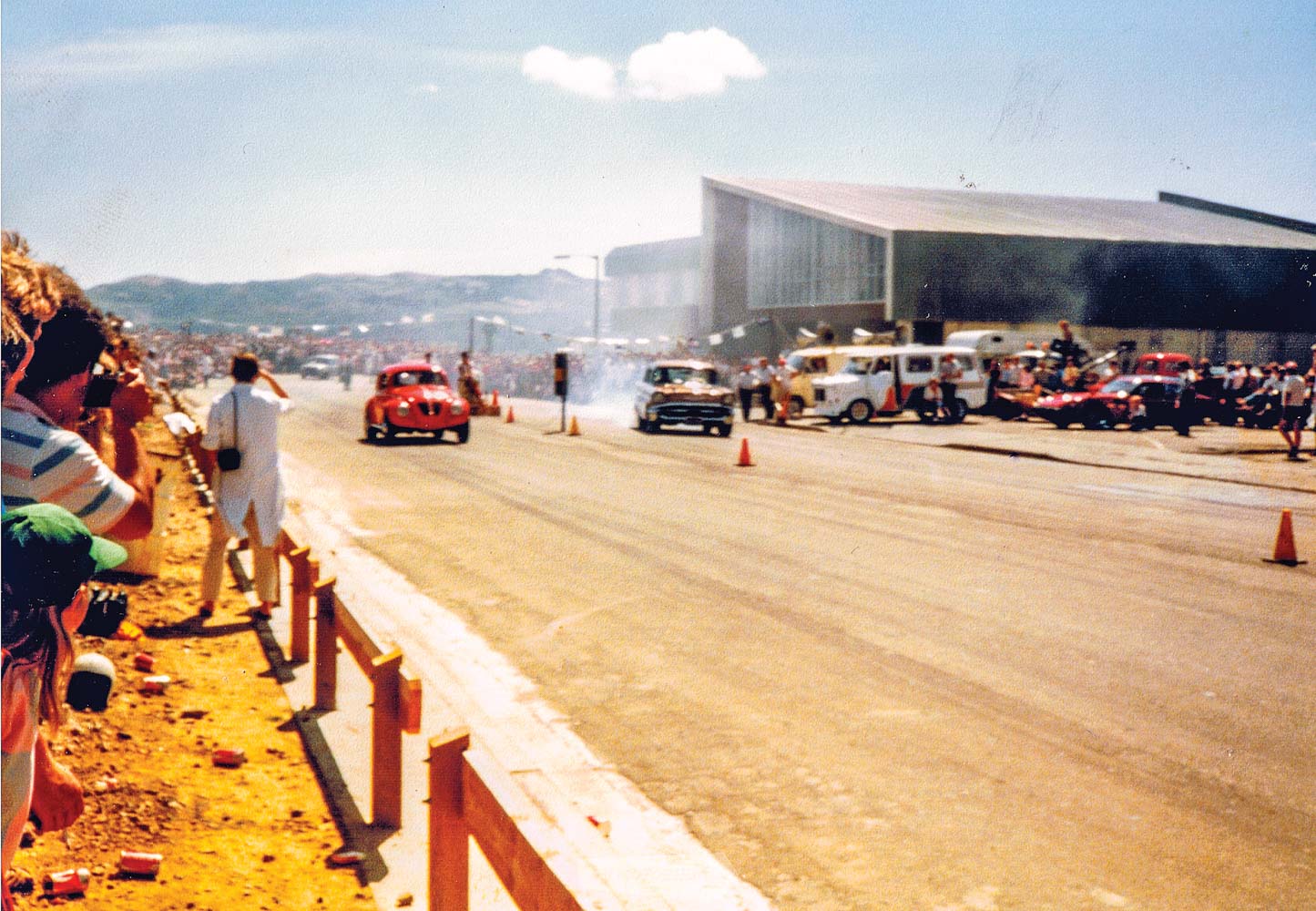
Russ Clarke’s 350ci small block Chev–powered VW Beetle — a very crazy machine — racing around 1986
Dan Southall will be up from Christchurch again this year with his ’69 Camaro, fresh from running eights on the quarter with his new engine, and hoping to beat Darren Riches, the reigning champion. No doubt Ben Morris and Aaron Thomas will also be there to make their mark, and there are probably many others out there keen to take the title at the 50th anniversary meeting. I just hope the weather gods continue to smile, Cam County’s big event goes off without a hitch, and the sun shines brightly on November 27, 2016, for all those who are involved, racers and organizers alike.
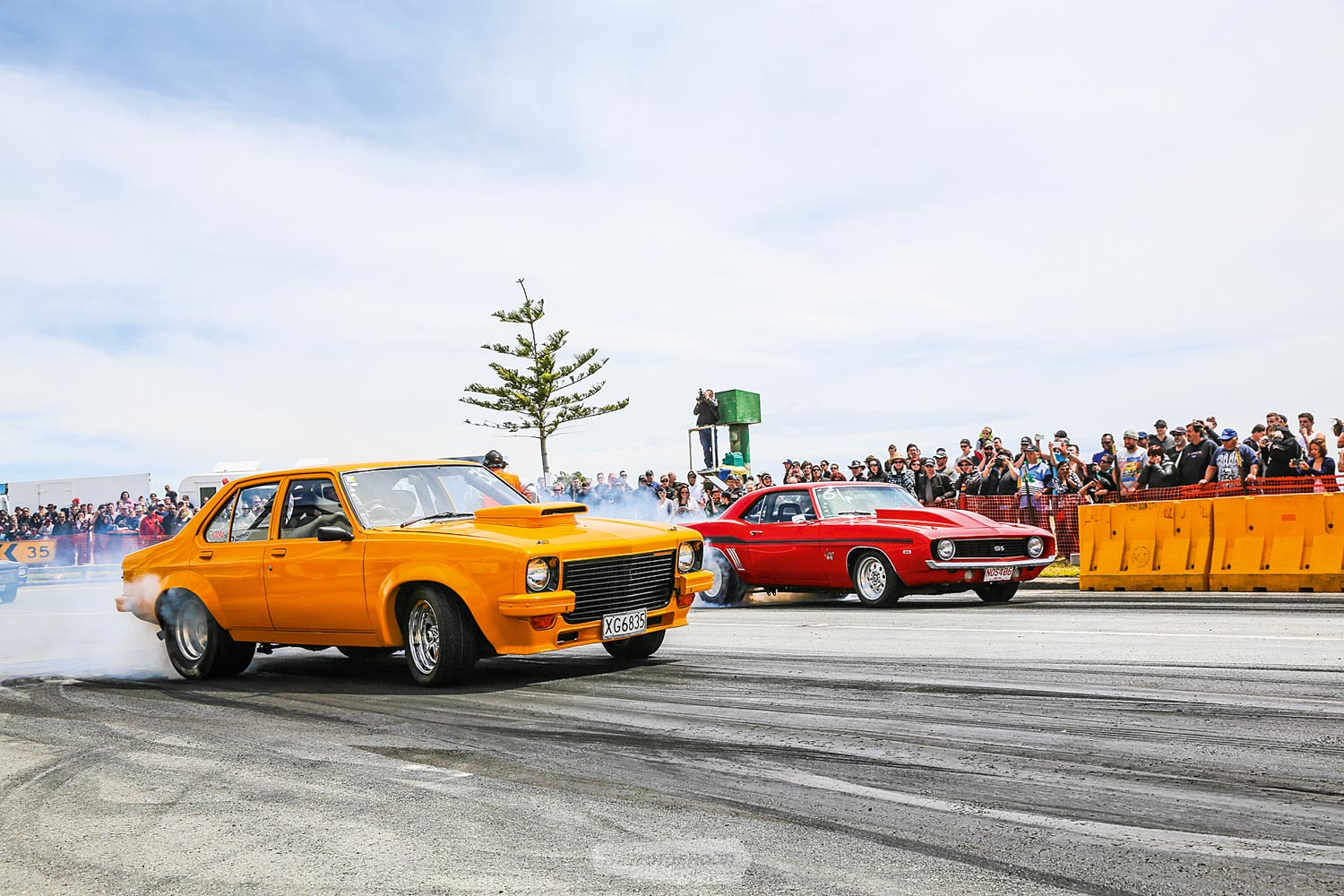
This article originally appeared in NZV8 magazine issue No. 139 — you can buy a print copy of the magazine by clicking below!






